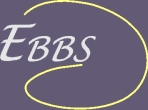|
|
The Retrosplenial
Cortex: Revealing Its Role In Memory And Limbic System Function |
Prof. John Aggleton (School of Psychology, Cardiff University, Cardiff, Wales, U.K.)
Dr. Thomas Van Groen (Dept. Cell Biology, University of Alabama at Birmingham, Birmingham, USA)
| Even
though there is growing evidence that the retrosplenial cortex
contributes to a variety of cognitive functions, most especially
memory, the significance of the region has often been overlooked. The
retrosplenial cortex is strategically placed anatomically as it is
interconnected with the hippocampal region, anterior thalamic nuclei,
and prefrontal cortex. For this reason it may serve to link temporal,
diencephalic, and prefrontal regions involved in memory. Consistent
with this notion are clinical reports of memory dysfunction associated
with retrosplenial cortex damage, while functional imaging studies have
begun to reveal its importance for aspects of episodic memory. In
spite of its strategic position, it is only in very recent years that
its potential importance has emerged. In this symposium we will present complementary evidence from anatomical, lesion, gene expression, and functional neuroimaging studies that all underline the importance of this region for limbic function. Rodent studies highlight how the retrosplenial cortex is heterogeneous and will ultimately need to be subdivided functionally. Related research is revealing the unusual vulnerability of this region to brain insult. Studies using functional MRI in humans are beginning to reveal its operating mechanisms, and its contribution to the dynamics of the brain’s memory system. |
- Thomas Van Groen: Anatomy of the anterior thalamus – retrosplenial system and its role in memory.
- Seralynne Vann: Functional subdivisions within the rodent retrosplenial cortex.
- John Aggleton: Evidence for cryptic pathology in the retrosplenial cortex and its potential contribution to memory disorders.
- Eleanor Maguire:
What can functional neuroimaging
studies in humans tell us about the functions of retrosplenial cortex?
